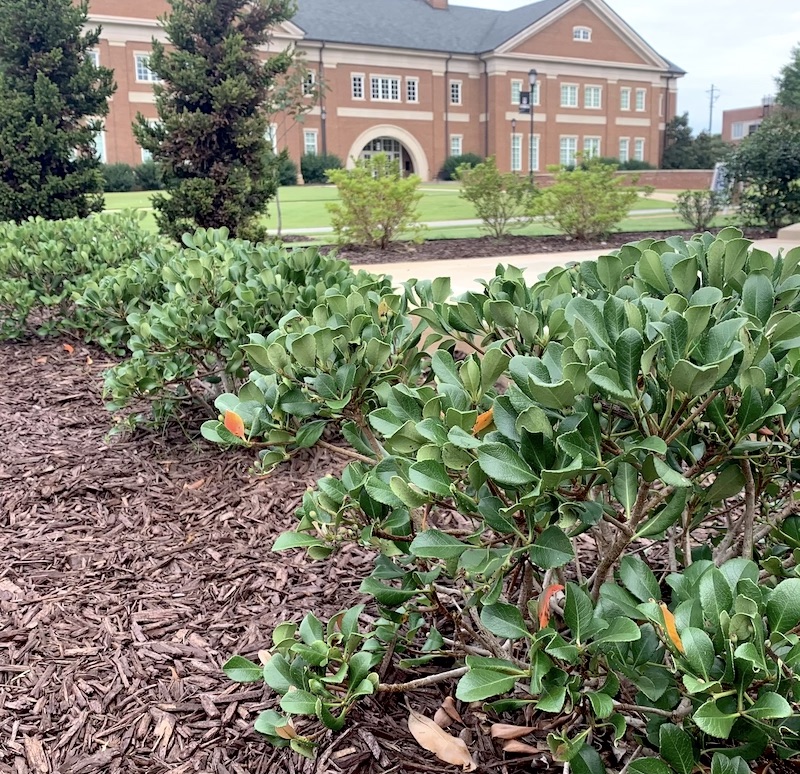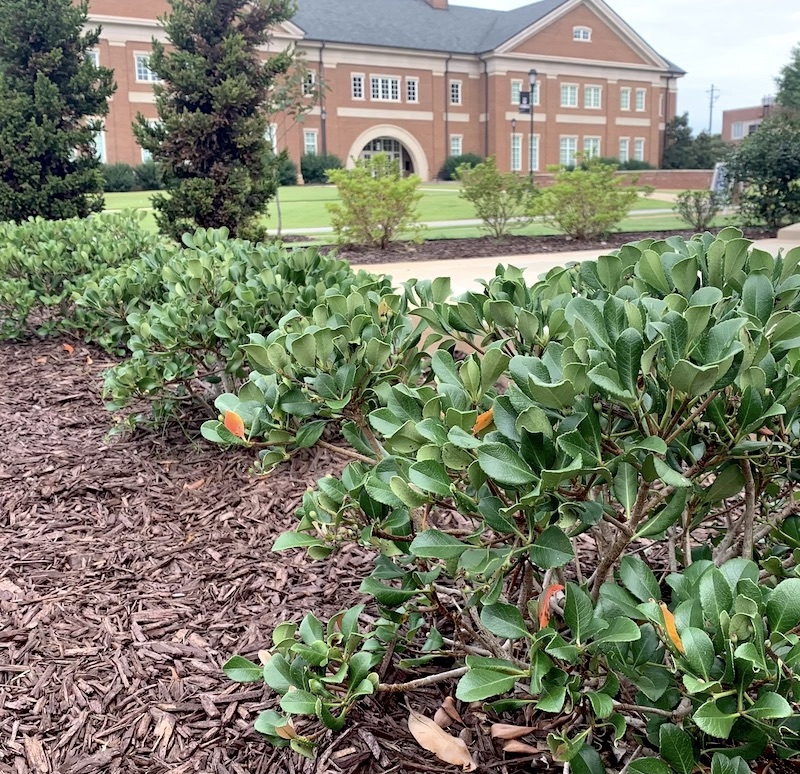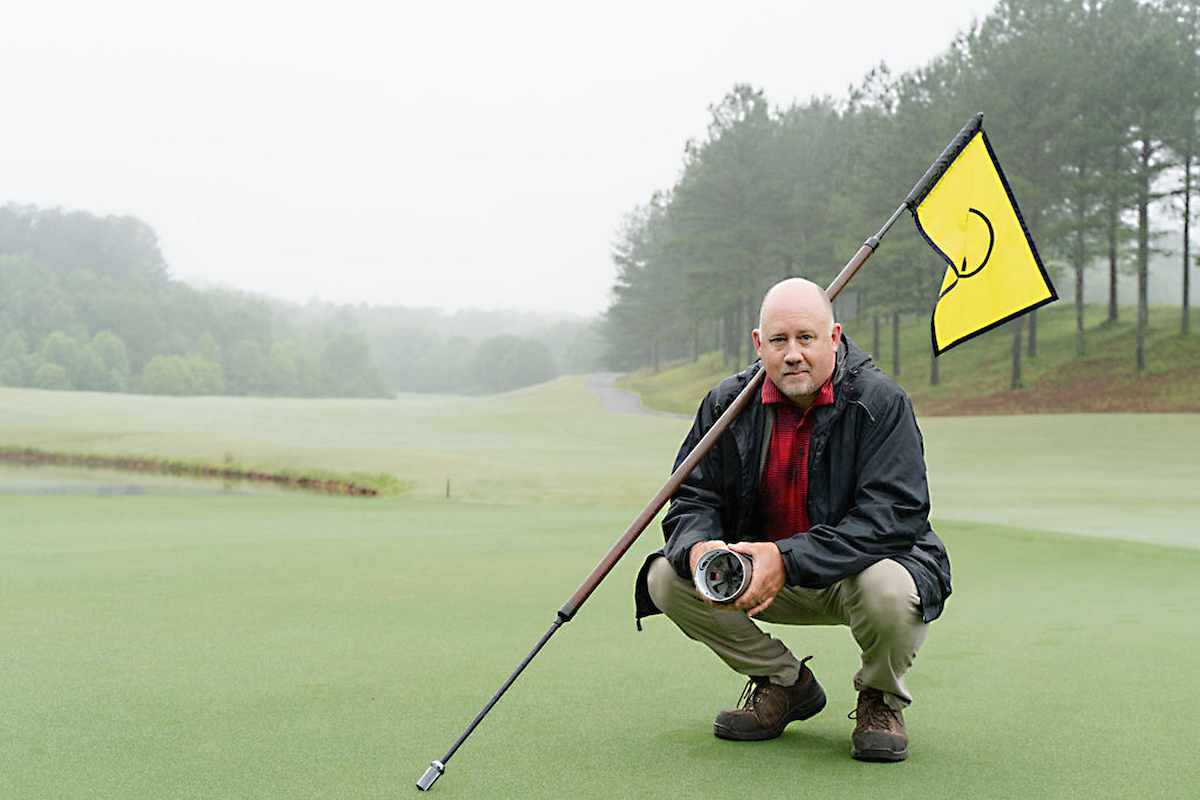Many clients contact their local University of Georgia Cooperative Extension office frustrated with grasses taking over their flower beds or vegetable gardens.
A common phone call might involve Bermuda grass taking over a bed of juniper ground cover or daylilies. And, if you’ve ever tried to pull Bermuda grass out by hand, you quickly learned that it just grows right back from any root fragments left in the soil. It’s nearly impossible to dig or pull out every piece of grass by hand.
One option to control grasses in flower beds is what I like to call the “smothered and covered” method. Mulching can be used to effectively control small infestations or in areas where herbicides cannot be used.
To use this method, cover the entire infestation with several inches of mulch. This may include wood chips, pine straw or similar materials. Hay and grass clippings should not be used as mulch, since they may carry weed seeds.
Covering the area with a layer of cardboard topped with mulch may improve the effectiveness of this method. The mulch should stay in place for at least two growing seasons to kill tough perennial grasses.
Depending on whether these weedy grasses are growing in a flower bed or a vegetable garden, there may be options available to control weeds with selective herbicides labeled for particular applications.
In vegetable gardens, use an herbicide containing the active ingredient sethoxydim (brands such as Poast and Vantage) around broadleaf vegetables to control Bermuda grass, crabgrass and other grasses without harming your veggies. This product cannot be used around corn, however, as corn is in the grass family and will be damaged. This chemical is very selective for controlling grasses and will not control other weeds.
There are also product options on the market that can be used in flower beds to selectively control weedy grasses. Products containing the active ingredient clethodim (Envoy), fluazifop-p (Grass-B-Gon and other brands) or sethoxydim (Segment) are safe around most flowers and shrubs. For nutsedge that is invading flower beds, a selective product that contains imazaquin (Image) can be applied over the top of a number of ornamentals. Be sure to read the label for which plants are safe to spray around.
A nonselective herbicide containing glyphosate (brands such as Roundup and others) can also be used in between rows and along borders of vegetable gardens and flower beds. However, because this is a nonselective herbicide, avoid any direct contact or spray drift with desirable plants.
Do not spray on a windy day. Make a shielded spray application by using a piece of cardboard or other barrier to shield plants and spray just the weeds. As long as the spray does not contact the leaves of vegetables, fruit trees, shrubs or flowers, it should not damage these plants.
Glyphosate is inactive in the soil, so it does not affect plant roots in the areas that are treated. Make sure the formulation used has only glyphosate as the active ingredient. Many other herbicides and combination products are soil active and are not appropriate to use in these situations. For example, avoid using combination products such as Roundup Extended Control, which should never be used in a vegetable garden or flower bed.
One last tool to add to your weed control toolbox is a pre-emergent herbicide. Consider using pre-emergents in combination with mulch and other selective herbicides as needed. There are several products on the market such as trifluralin (Preen, Treflan and other brands) that can be applied to prevent the seeds of annual grasses (i.e., crabgrass) from growing.
Pre-emergents will not control weeds that are currently established, but they will significantly reduce the number of weeds that come back from seed. Timing is the key with pre-emergent herbicides. They should be applied before March 15 for weed prevention in flower beds or incorporated into the soil of a vegetable garden, according to the label.
Be sure to read and follow all labeled application rates and safety precautions when using herbicides.




